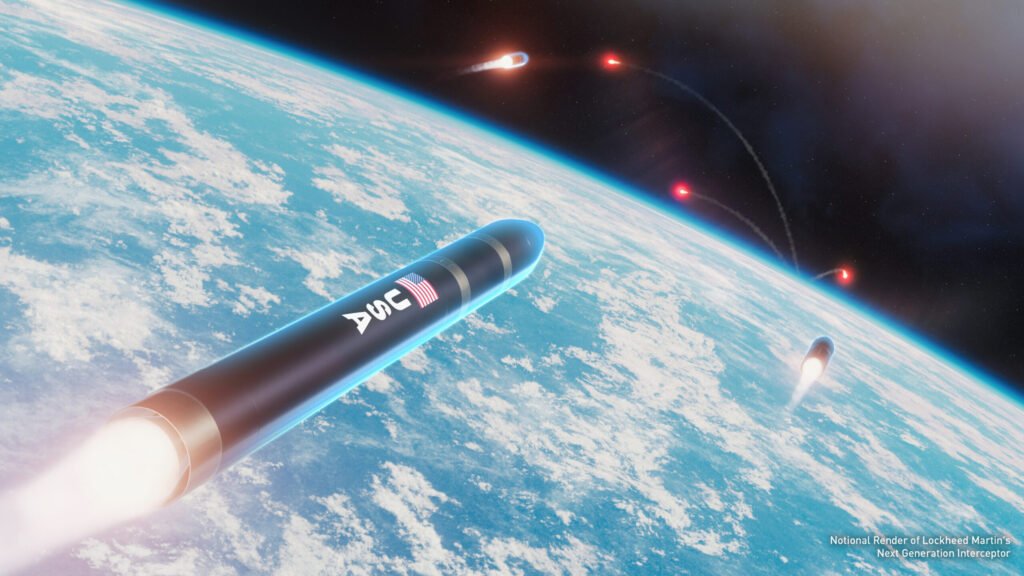[ad_1]

NGI (Next Generation Interceptor) is designed to counter long range ballistic missile threats from rogue nations to the U.S. homeland.
Lockheed Martin has been awarded the NGI contract to develop the next generation of interceptors that would guard the United States against an intercontinental ballistic missile attack, Reuters reported citing two industry sources briefed on the matter.
The U.S. Missile Defense Agency plans to grant a sizable contract valued at 17 billion USD in the coming days, likely by April 21, 2024. This contract pertains to the development of the Next Generation Interceptor aimed at enhancing the existing Ground-Based Midcourse Defense system. This system comprises a network of radars, anti-ballistic missiles, and related equipment.
Though the duration of the contract remains undisclosed, insiders anticipate the initial interceptor to be operational as early as FY2027 (according to Lockheed). The Next Generation Interceptor is currently undergoing technology development and is slated to advance to the product development phase in May, as stated in written testimony presented last week by Lieutenant General Heath Collins, the head of the Missile Defense Agency.
Two contenders remained after the Pentagon terminated a contract with Boeing for a “kill vehicle,” which is the crucial component of an interceptor responsible for disabling an incoming warhead, because of technical design issues (and an investment of 1.2 billion USD) in 2019: Lockheed and Northrop Grumman.
Both companies received individual contracts in 2021 to formulate designs for the missile.
Lockheed Martin’s NGI

Some interesting updates about LM’s NGI proposal were provided by the company towards the end of last year.
In November 2023, Lockheed Martin achieved a significant milestone in its collaboration with the Missile Defense Agency (MDA) concerning the nation’s updated long-range ballistic missile interceptor. This accomplishment, known as KP1 (Knowledge Point 1), was completed ahead of schedule, marking a crucial contractual advancement for Lockheed’s Next Generation Interceptor (NGI) program toward the Critical Design Review (CDR) phase.
During KP1, MDA assessed Lockheed Martin’s progress in development, which encompassed meeting design review milestones and demonstrating substantial advancements in key technologies, manufacturing readiness, and the functionality of Lockheed’s NGI Software Factory. The successful completion of KP1 followed Lockheed Martin’s execution of the All Up Round Preliminary Design Review in September, which was completed on time.
Sarah Reeves, vice president of NGI at Lockheed Martin, said: “We proved at KP1 that we have reached a level of maturity unprecedented at this stage of a missile defense program.” With MDA’s approval, Lockheed Martin has entered the detailed design phase, continuing to test integrated NGI hardware and software in readiness for production and flight trials.
Moving forward, Lockheed Martin’s NGI team will focus on reaching the Critical Design Review milestone in the third quarter of FY2025, exploring opportunities to expedite the schedule. During this critical review, the MDA will evaluate the readiness for flight testing. The first Lockheed Martin NGI is anticipated to be delivered to the warfighter as early as FY2027.
A significant threat
The headline news confirm the threat is real, making the need for missile defense one of the most urgent defense agenda for the United States. Despite all the efforts, in a future that might no be too far, diplomacy may fail. There are many real world crisis scenarios that might involve an ICBM: a collision between a U.S. Navy vessel and an adversary nation submarine; a U.S. Air Force surveillance plane is shot down by a Russian fighter performing a reckless maneuver like the one that caused the crash of an MQ-9 Reaper in the Black Sea. A rogue nation carries out a ballistic missile testing that goes wrong.
[ad_2]
Source link
